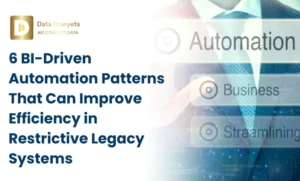
If you work with data at all whether it’s sales numbers, customer feedback, or project progress, you’ve probably heard the terms Power BI dashboard and Power BI report. They sound similar, and both visually present your information in ways like charts, graphs, or tables. However, they are not the same thing, and knowing the difference can help you use them better.
In this article, we will discuss what each one of them does, how they are different, and why dashboards are often the smarter, more efficient choice for modern businesses and fast-paced teams.

Power BI is a Microsoft tool that enables individuals to see and understand data in a more visually accessible way. Power BI can connect to many different data sources such as Excel files, PDFs, CSV files, online services, etc. Power BI then translates data into visuals that provide a quick and clear understanding of data.
Once you connect and shape your data, you can build:
Both tools let you work with data but dashboards are designed to provide insight faster and with real-time monitoring and executive clarity.
If you are used to creating charts in Excel and have possibly made a sheet full of different bar charts and tables, you might assume that reports and dashboards are the same, as both involve putting several visualizations on one page.
But in Power BI, the tools have different jobs:
Understanding when to use one tool over the other can be a big difference.
Before explaining the differences, let’s look at what both dashboards and reports share:
Therefore, they can seem similar when it comes to use case – dashboards give you an advantage due to their speed, simplicity, and real-time awareness.
Let’s compare them side by side to see how each tool is best used.
Feature | Power BI Dashboard | Power BI Report |
Purpose | Quick overview, instant insight | Deep-dive analysis |
Pages | Single page simplicity | Multiple pages |
Interaction | Light interaction, clean experience | Interactive filtering, drilling |
Data Update | Real-time or near real-time | Scheduled or manual refresh |
Best For | Executives, managers, quick tracking | Analysts, long-term exploration |
Speed of Setup | Fast to build and share | Takes more time to design |
User Experience | Straightforward, visual-first | Detailed and technical |

Power BI dashboards are built for speed, clarity, and action. They give your business:
Dashboards are most impactful in fast-paced environments where decisions are made quickly based on quick visual information — such as in tools like the Annual Disc Planner – Power BI Dashboard or Microsoft Planner – Power BI Dashboard, where users need immediate insight into tasks, goals, and progress.
Choose a Power BI dashboard if you:
Dashboards excel when your outcome is clarity, simplicity and real-time awareness. That’s why they are more suitable for modern organizations, executives and agile teams.
Which One Should You Build First?
Assume the following question to start:
Would I prefer a quick overview or deep-dive analysis?
In most business cases, you probably want a dashboard. It’s faster to create, easier to use and provides immediate value. You can create a report and then pin the necessary visuals to a dashboard and you’re all set to go!
The difference between Power BI dashboard vs report is crucial to making Power BI work well for you. A dashboard allows for a quick overview on one page.
Reports are still important, but dashboards drive action. For leaders, project teams and companies that value speed and clarity, Power BI dashboards are the smarter and faster tool.
At Data Inseyets, we help organizations unlock the true potential of Power BI by designing intuitive, actionable dashboards that drive smarter decisions.
A dashboard is a one-page, real-time summary of some key metrics; a report is a multi-page, more indepth analytics tools.
Yes, Power BI dashboards support real-time or near real-time data updates when connected to streaming or live data sources. This makes them ideal for monitoring operations, sales, or performance metrics as they happen.
Yes, Power BI dashboards are generally faster and easier to create. You can build a report first, then pin key visuals to a dashboard. Dashboards focus on visual clarity and speed, while reports require more detailed design and setup.
Yes, Power BI dashboards are mobile-responsive and optimized for the Power BI mobile app, allowing users to view key data on the go. However, some advanced interactions available in reports may not work the same on mobile.
© 2025, Data Inseyets-All Rights Reserved.